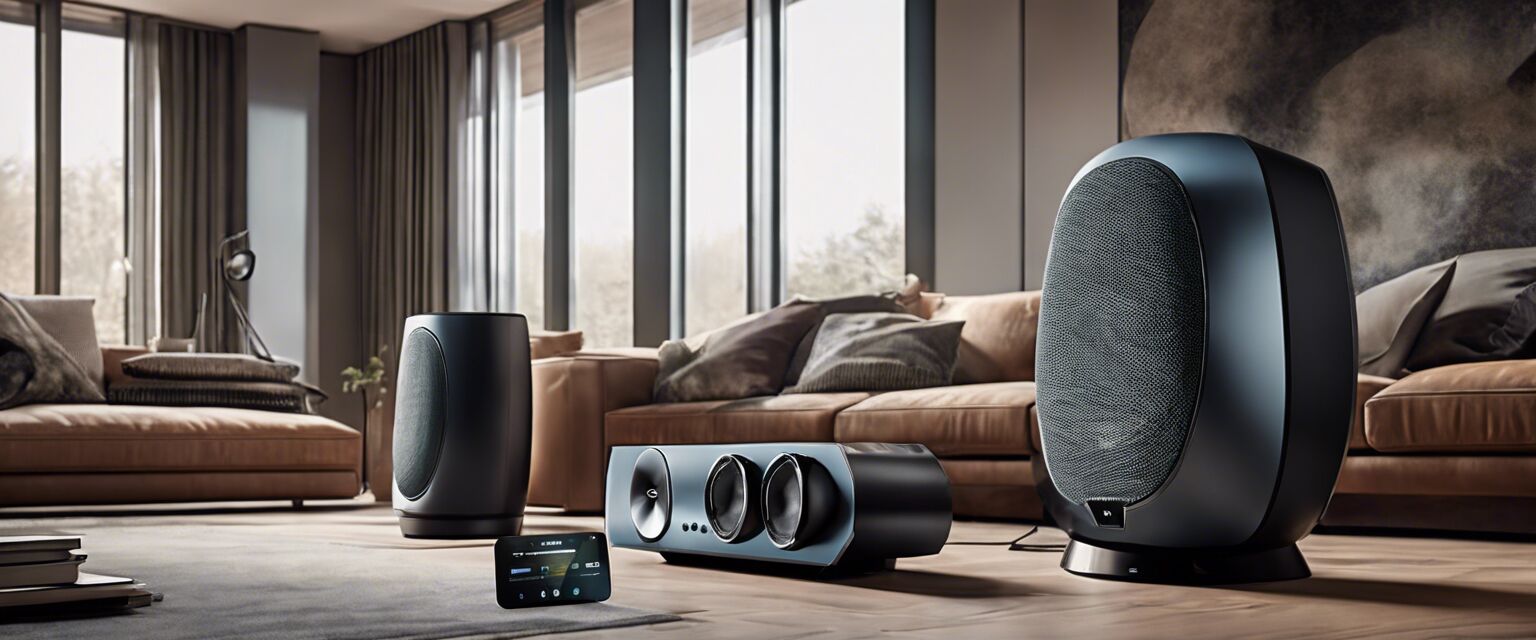
Home Theater Systems
Key Takeaways
- Home theater systems enhance your movie and audio experience.
- Choosing the right speakers and configuration is essential for optimal sound quality.
- Setup guides can help you maximize the performance of your home theater system.
Home theater systems have become increasingly popular for those looking to elevate their movie watching and music listening experiences. With the right setup, you can transform your living space into a cinematic paradise. In this article, we will explore the different components of home theater systems, provide expert reviews, and offer setup guides to help you achieve the best sound quality.
What is a home theater system?
A home theater system is a combination of audio and video equipment designed to replicate the experience of a commercial cinema. This system typically includes a television or projector, speakers, a receiver, and various input devices such as DVD players or streaming devices.
Components of a home theater system
| Component | Description |
|---|---|
| Television/Projector | The main display unit for viewing content. |
| Speakers | Audio output devices that create sound effects and music. |
| Receiver | The central hub that connects all components and processes audio/video signals. |
| Input Devices | Devices like Blu-ray players, gaming consoles, or streaming devices. |
Types of home theater speakers
Choosing the right speakers is critical to the overall performance of your home theater system. Here are the common types of speakers:
- Floor-standing speakers: Ideal for larger spaces, these speakers provide robust sound.
- Bookshelf speakers: Compact and versatile, suitable for smaller areas.
- Surround speakers: Used for immersive audio, positioned around the listening area.
- Subwoofers: Provide deep bass sounds, enhancing the overall audio experience.

Setting up your home theater system
Setting up your home theater system requires careful planning and consideration of your space. Here are some steps to help you get started:
- Choose the right room: Consider a space with minimal outside noise and sufficient room for your equipment.
- Determine your speaker layout: Decide on the placement of your speakers for optimal sound distribution.
- Connect your components: Use quality cables to connect your speakers, receiver, and input devices.
- Calibrate your system: Use the receiver's calibration tool to optimize audio settings based on your room's acoustics.
Comparison of popular home theater systems
| System | Speaker Type | Price Range | Key Features |
|---|---|---|---|
| 5.1 Channel System | 5 Speakers + 1 Subwoofer | $$ | Immersive surround sound |
| 7.1 Channel System | 7 Speakers + 1 Subwoofer | $$$ | Enhanced audio experience |
| Wireless System | Wireless Speakers | $$$ | Easy setup and flexibility |
Tips for beginners
Getting started with your home theater system
- Start small: If you're a beginner, consider starting with a basic setup and upgrading over time.
- Research: Read reviews and guides to find the best products for your budget.
- Ask for advice: Don't hesitate to reach out to friends or online forums for recommendations.

Pros and cons of home theater systems
Pros
- Enhanced audio and visual experience.
- Customization options for different preferences.
- Can increase property value with a well-installed system.
Cons
- Initial setup can be costly.
- Requires space for installation.
- Complexity may be overwhelming for beginners.
Conclusion
A home theater system can significantly elevate your entertainment experience. By understanding the components, choosing the right setup, and considering the pros and cons, you can create a customized audio-visual environment in your home. For more information on specific types of speakers, check out our pages on home audio systems, outdoor speakers, and portable Bluetooth speakers. Your perfect home theater experience is just a setup away!










